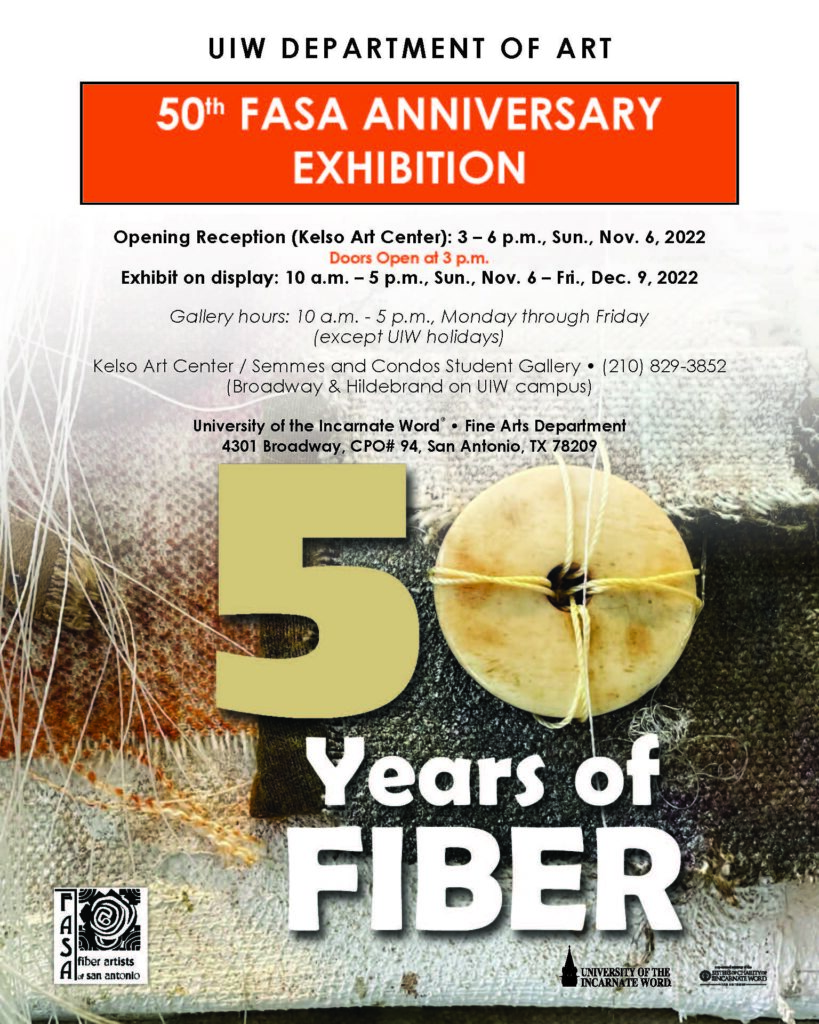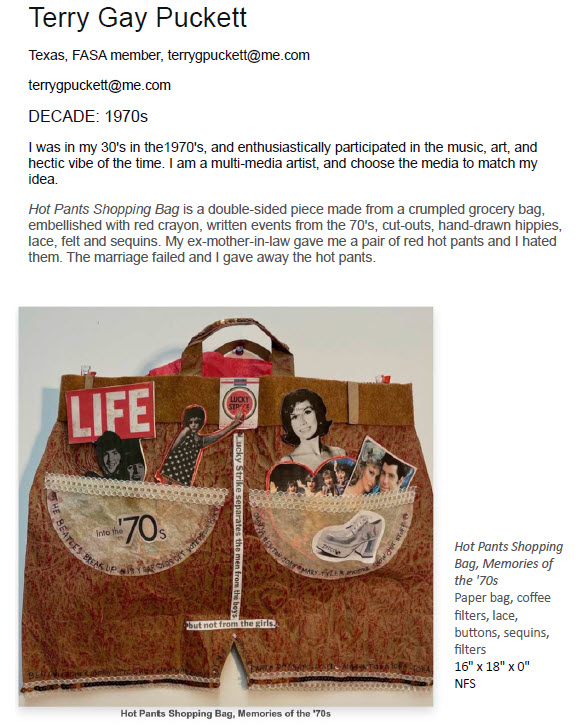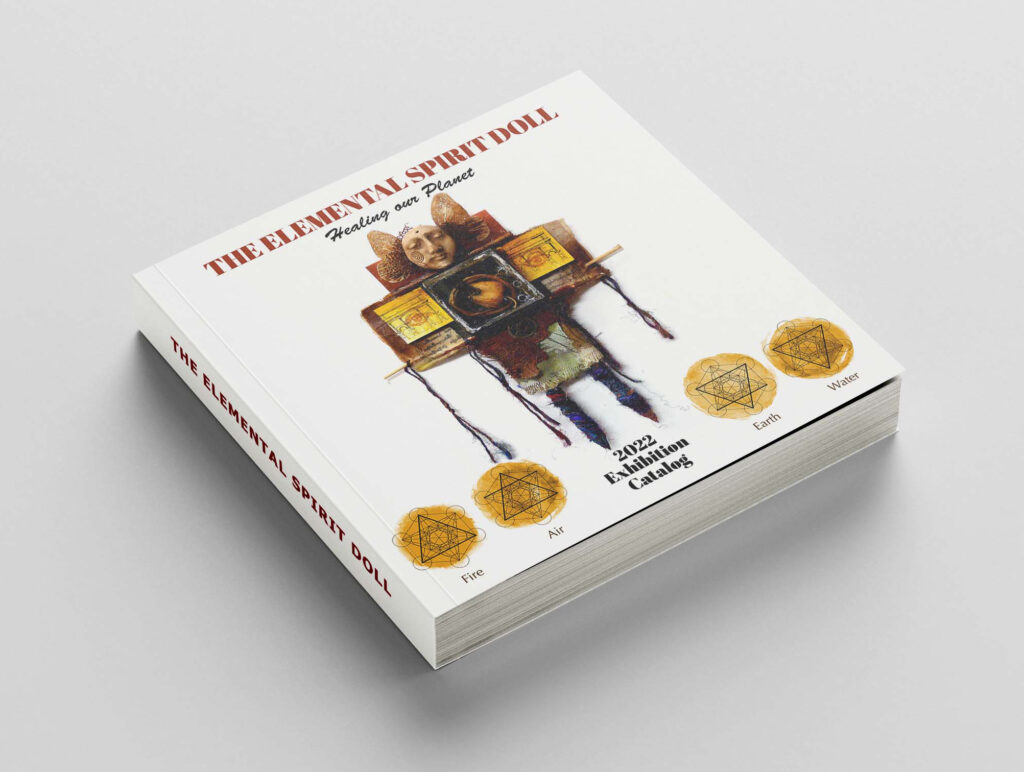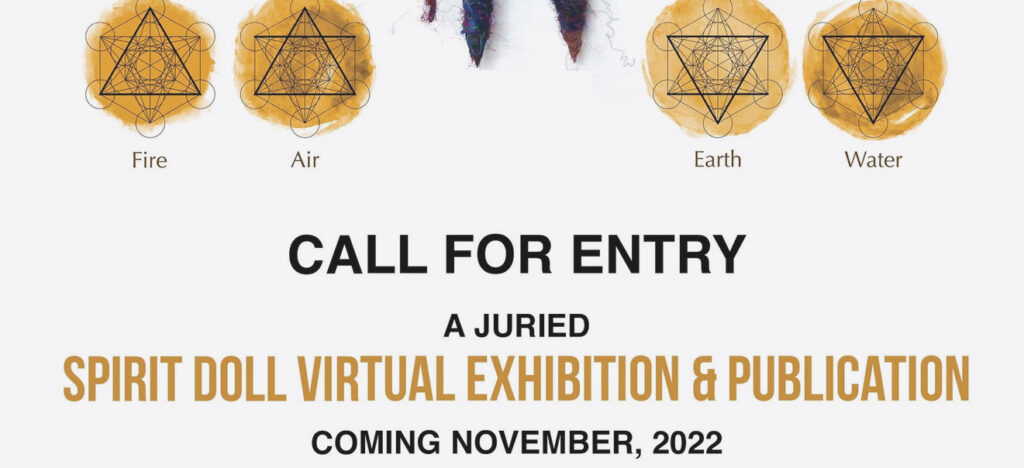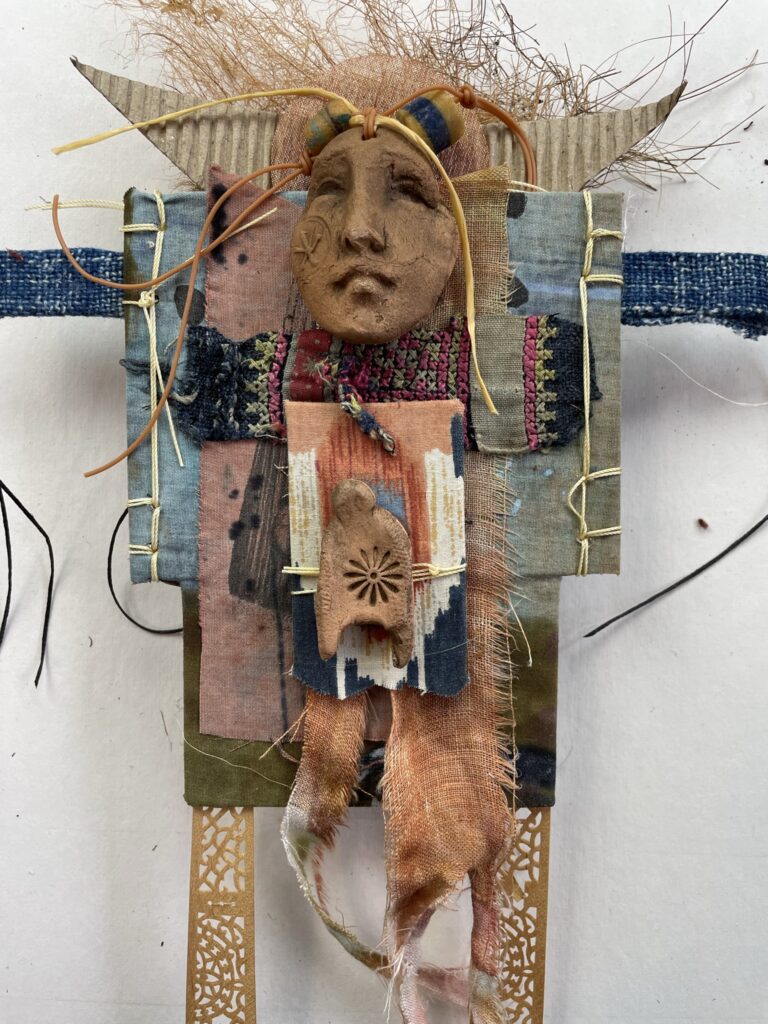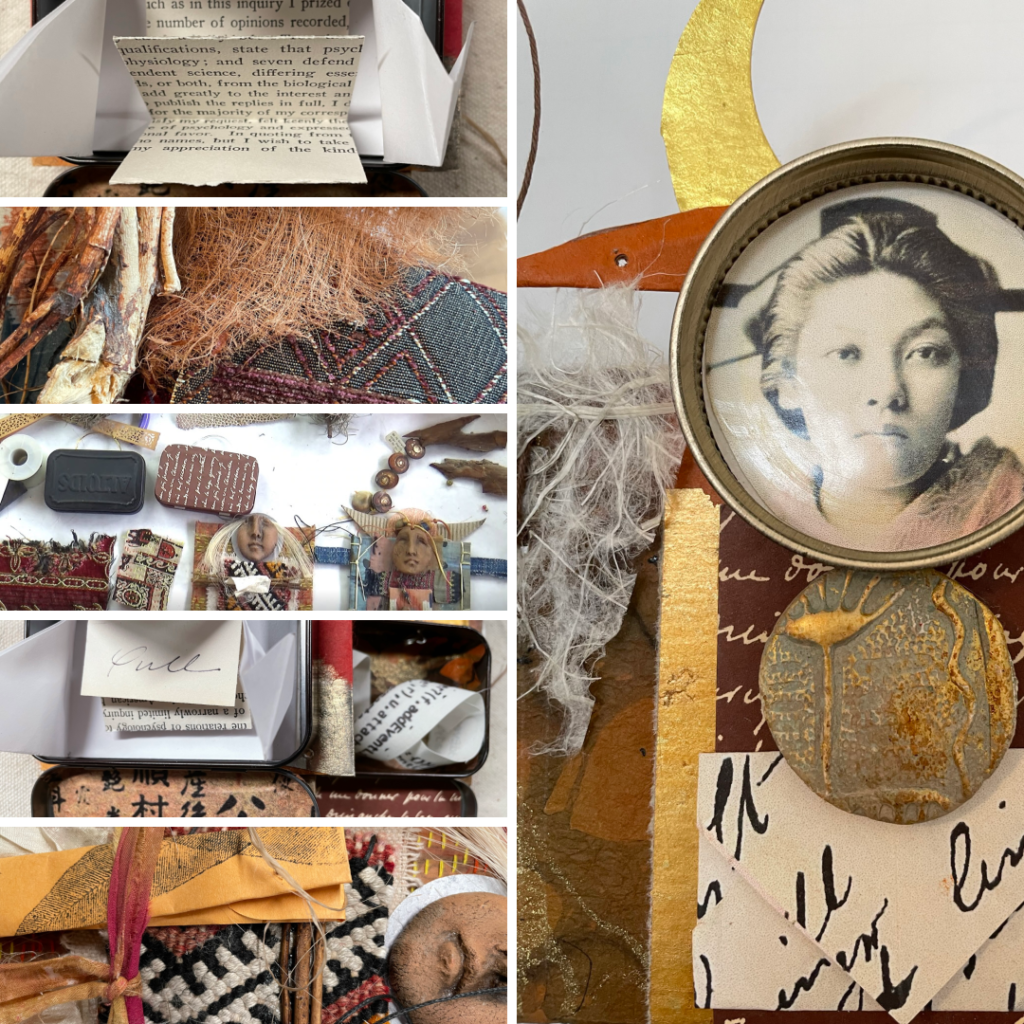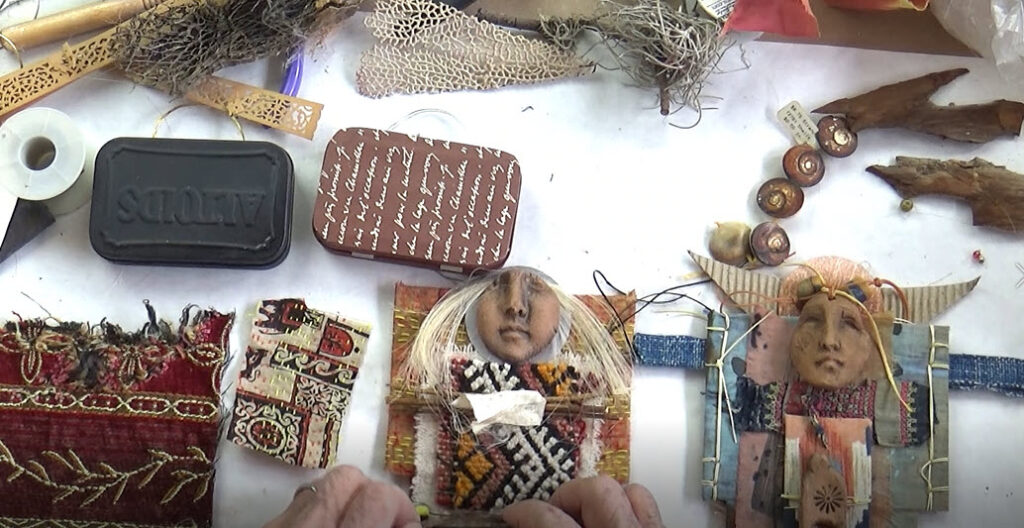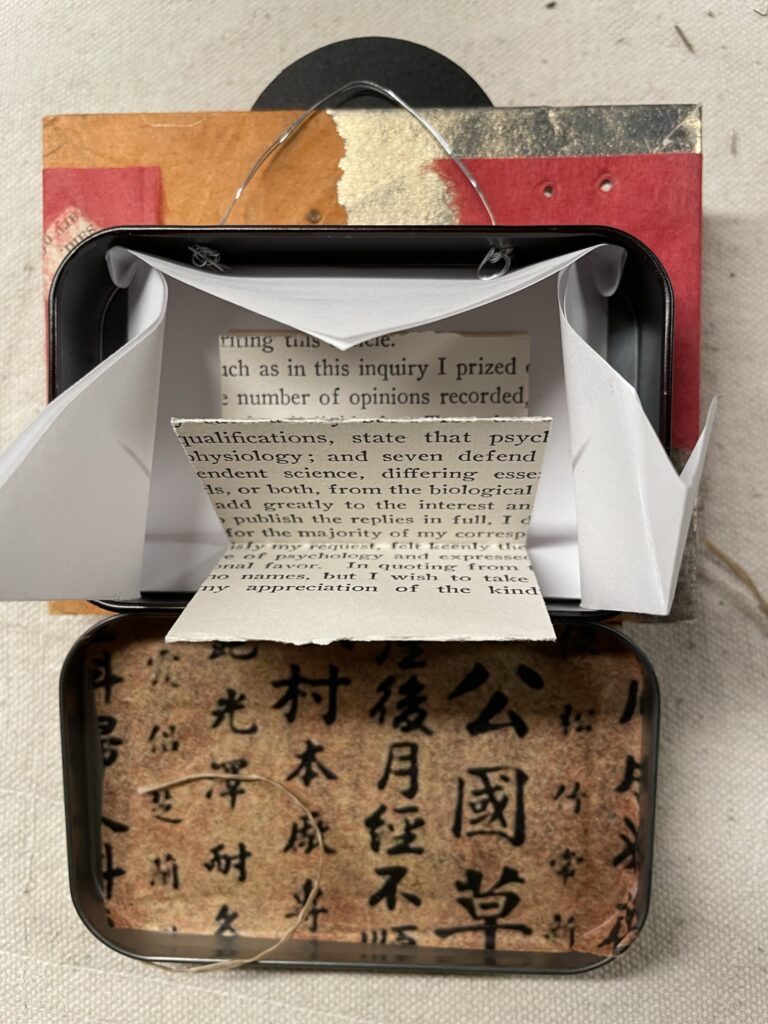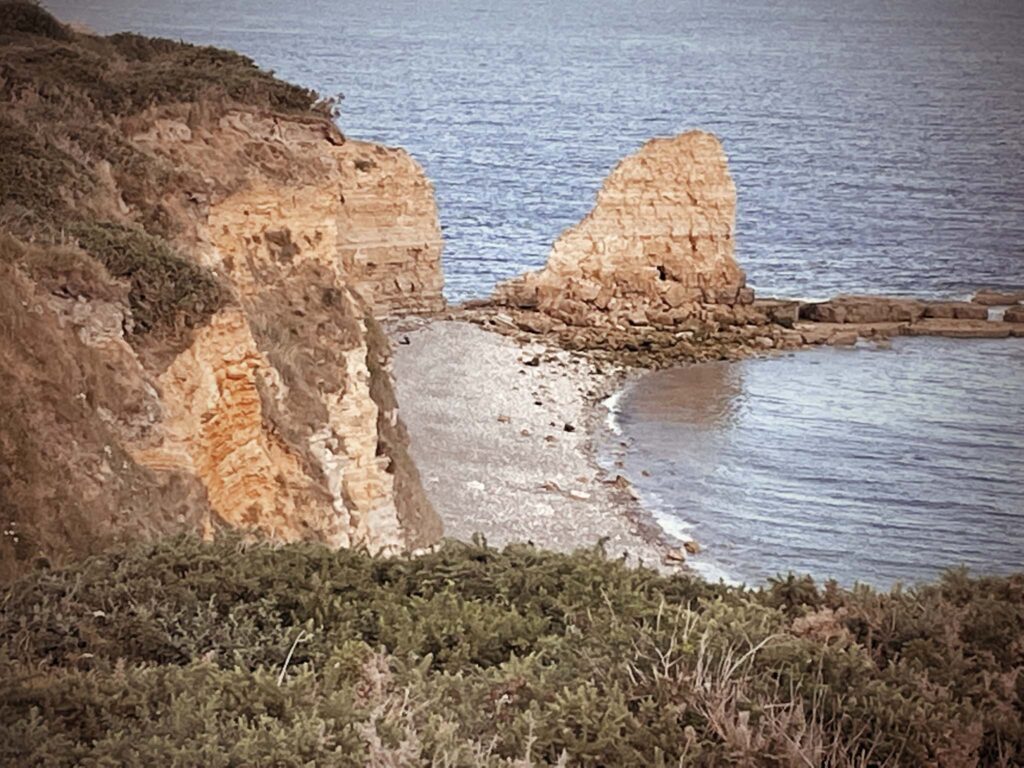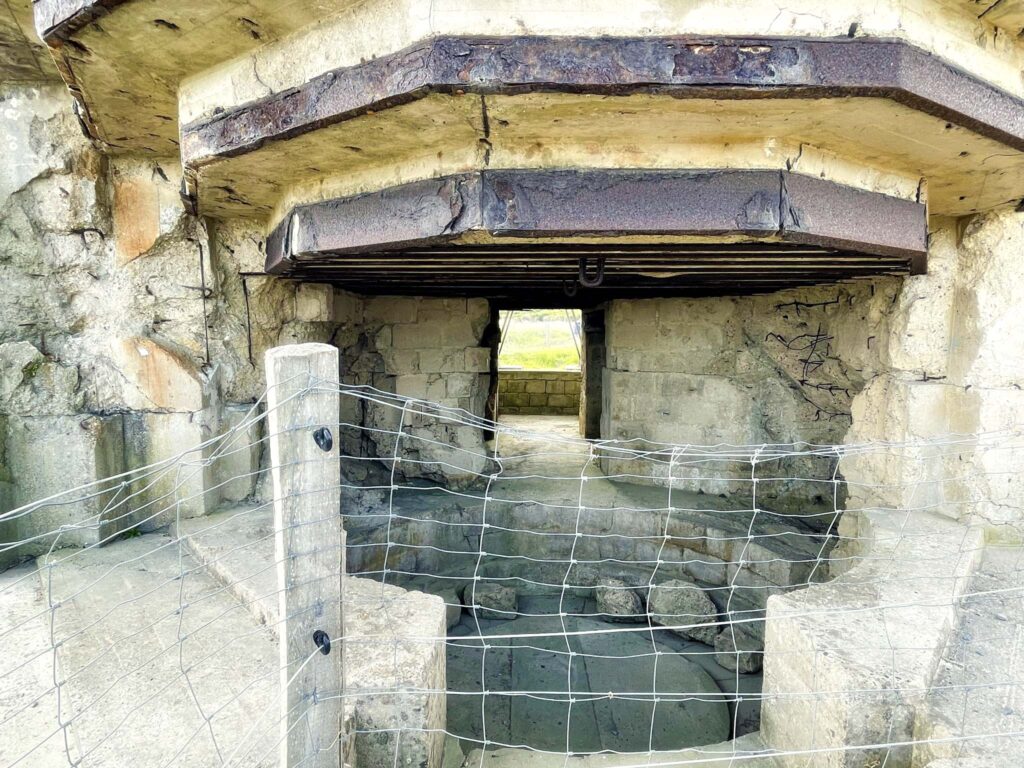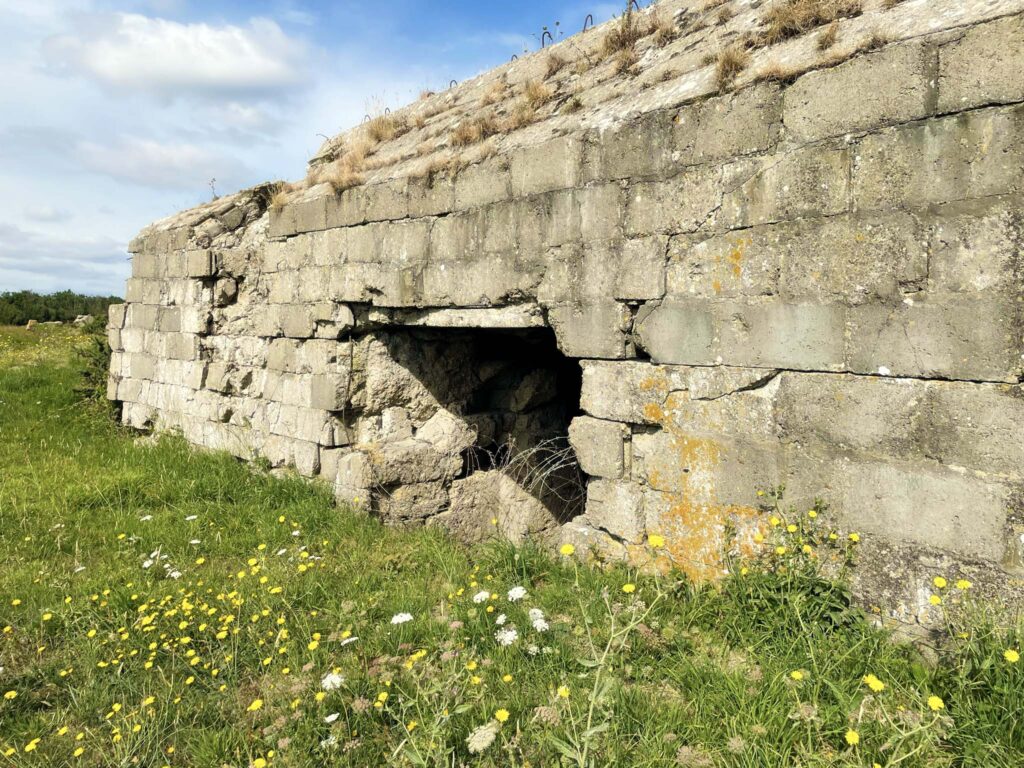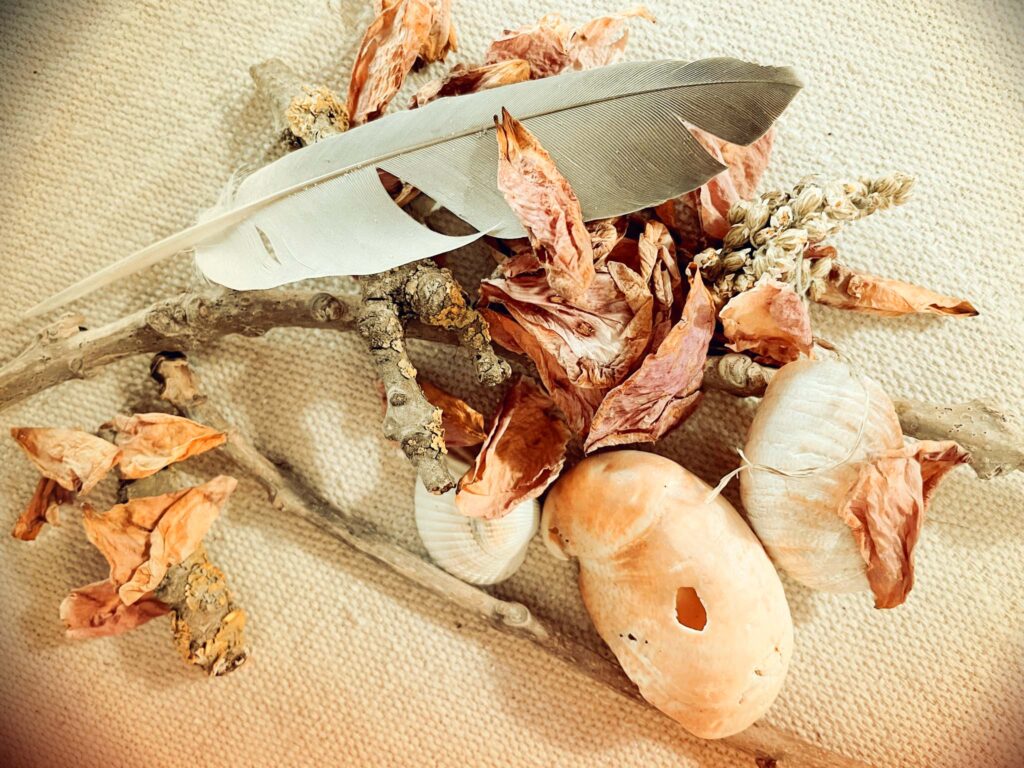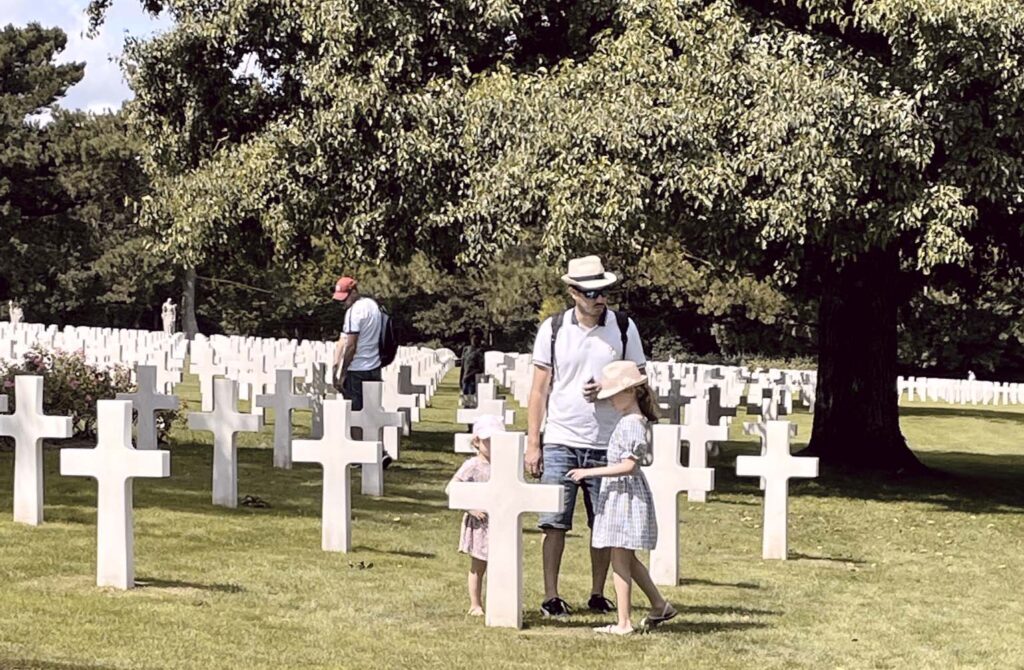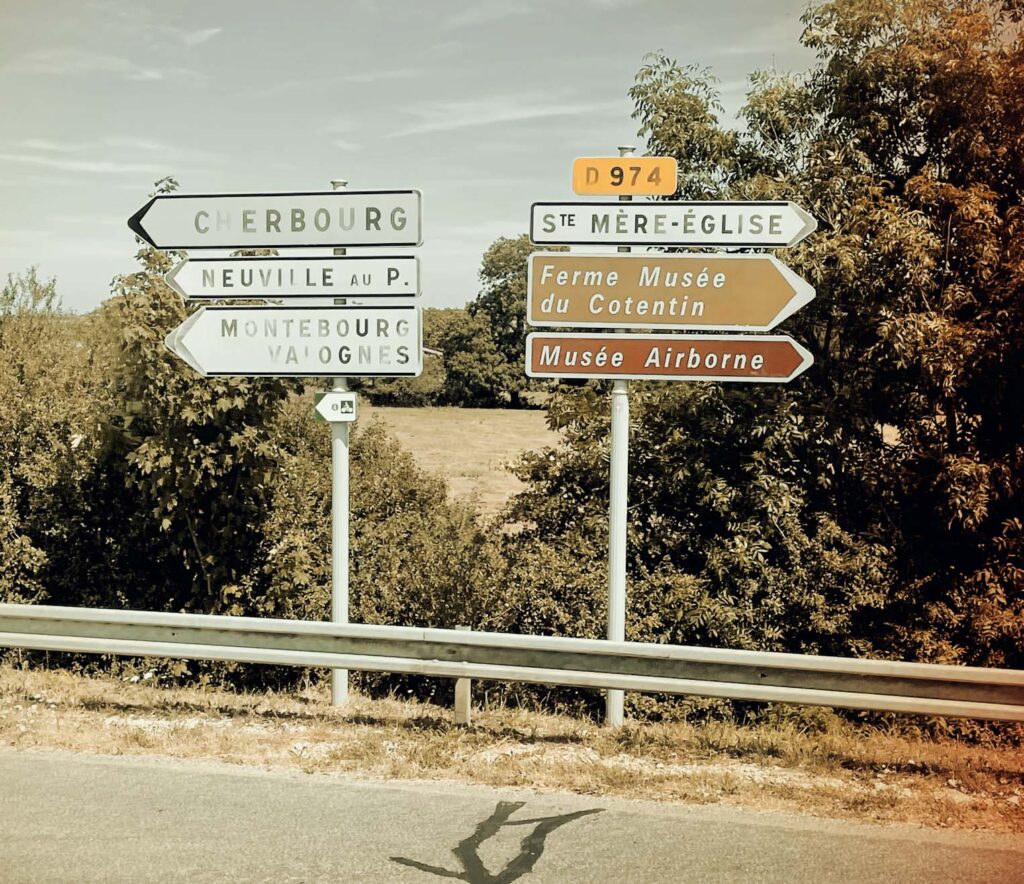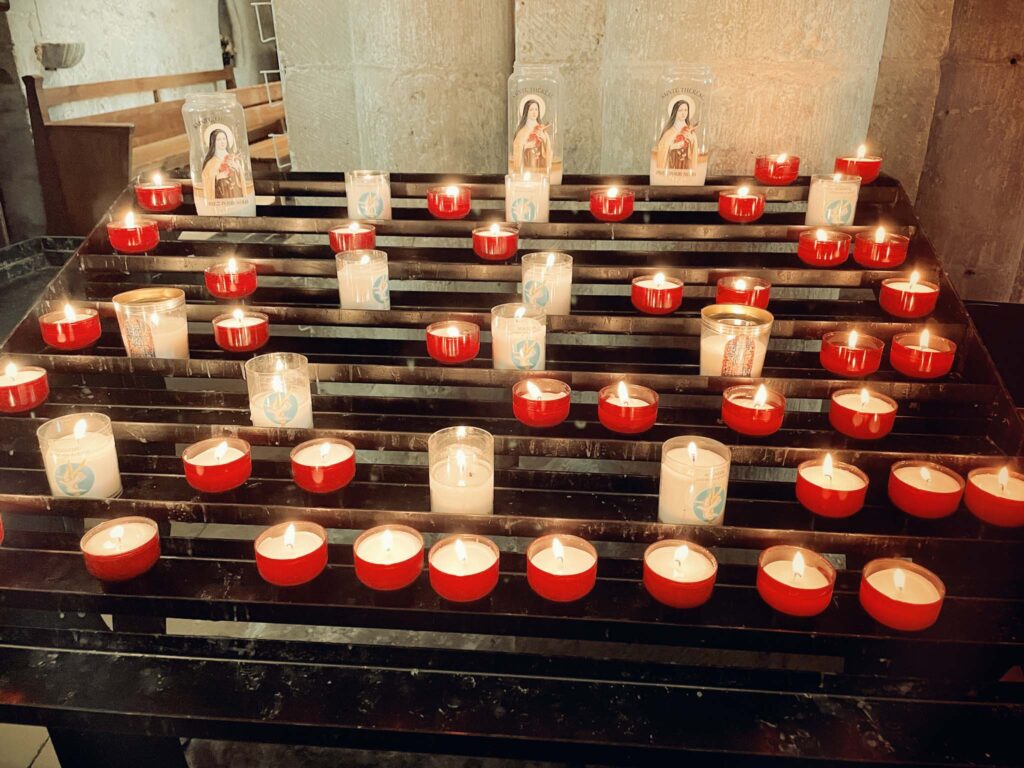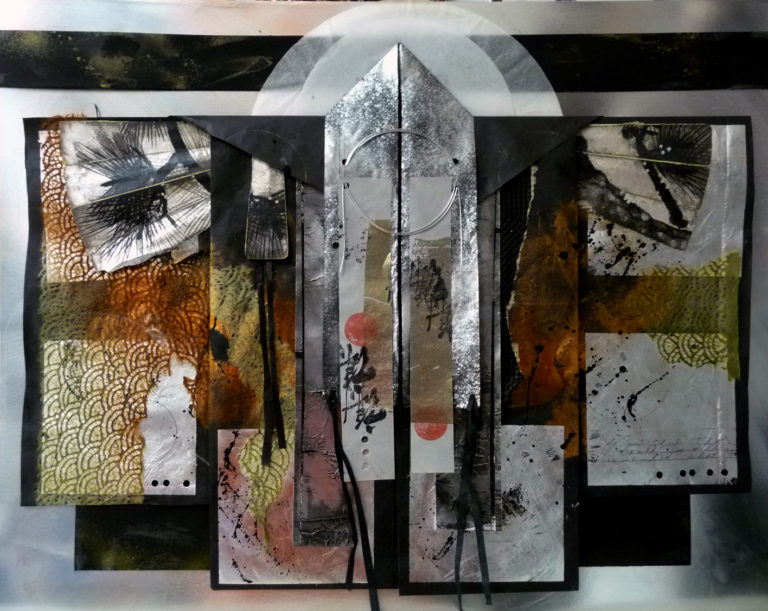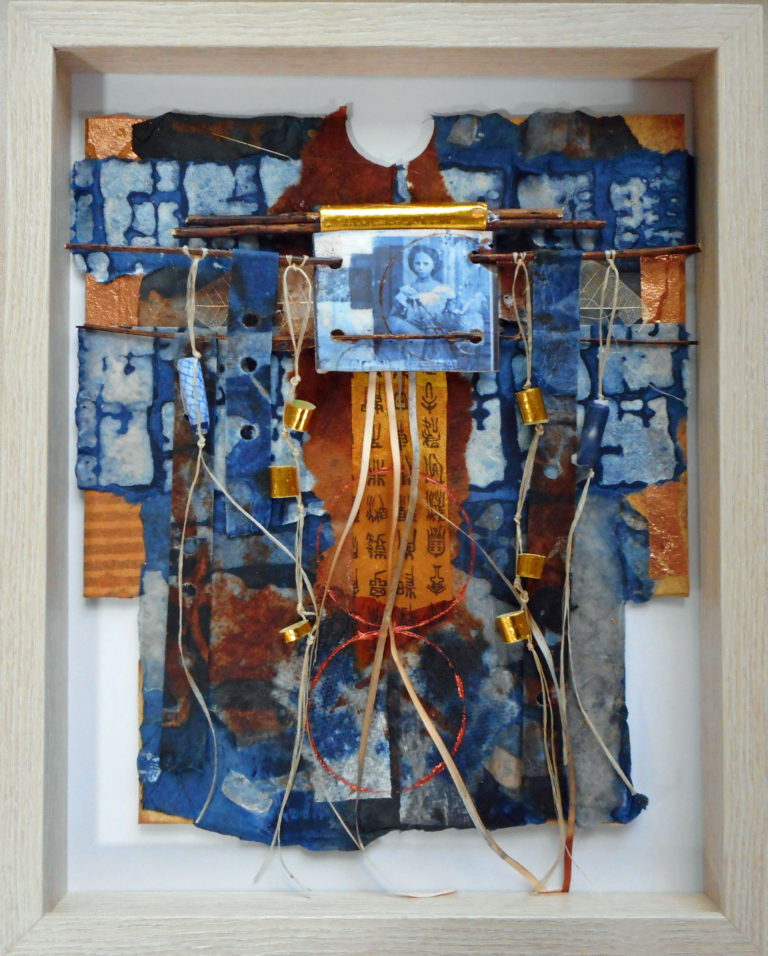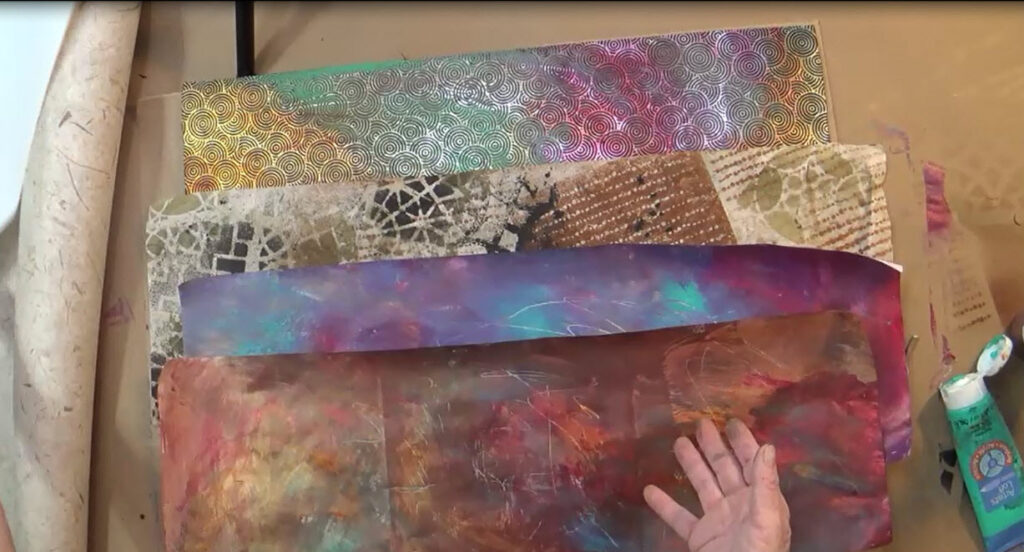I’m back from all kinds of adventures, including a studio move and teaching a workshop at the new Rockport Center for the Arts. Both those stories will be told later, but first, a delightful post from guest artist Meredith Johanson from Buffalo, NY.
Meredith and I “met” in the Spring of 2021 by email when she sent me a lovely thank-you card. We found much in common and promised to keep in touch. Then just last week, she send me photos of an amazing mixed media piece called Our Lady of Covid Relief. I know that her work and the story behind it will resonate as much with you as it did with me.
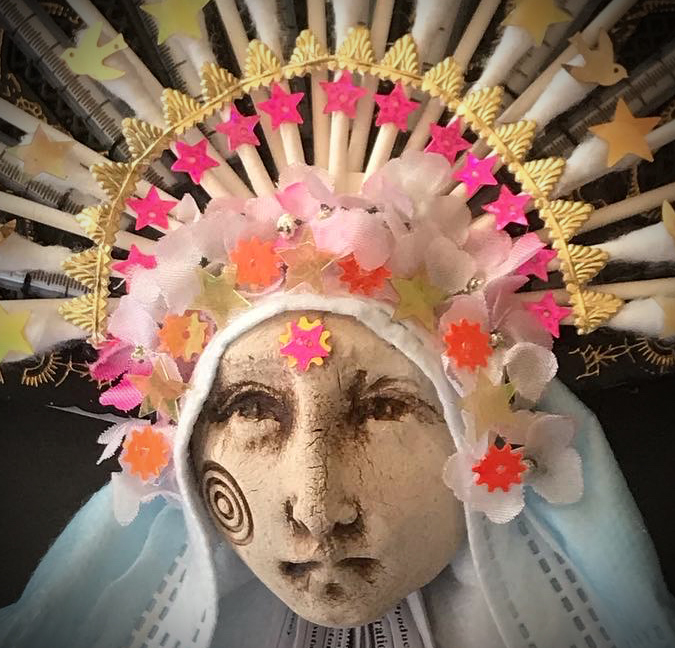
Our Lady of Covid Relief
by Meredith Johanson
I struggled with all the new parameters that the Covid pandemic created, all the fears, uncertainties, new ways of living, and all the old ways that helped in this strained situation. And of course, the original, authentic me created during all my years of living (70) was there too. So I processed what was happening to me in art from the get go. What else was there to do?
Ideas that have resonated with me for as long as I can remember include the idea that inanimate objects can have their own spirit, can hold spirit; madonna/saint/goddess figures are simply objects of focused love and somehow that gives them power/healing/softness and makes them universal; i have seen a wonderful humor in much around me; the universe provides if only we can be still and listen.
As many of us did during the ‘Covid period,’ I reached out to/with friends in art. I was talking to my cousin, half a country away, one day about using doll forms to represent spirit, call in spirit, release spirit, create presence, centering, grounding, releasing something, etc. We decided to embark on a project in which we would both make a doll (she never had even contemplated this) and I would coach her along. Then we would compare what we did.

I quickly discovered that the blue paper mask laying on my work table in the studio instantly turned my face into ‘Our Lady.’ She existed for months with just the head covering, watching over us all and waiting for me to catch up to her. And we were making friends. As we went through our own physical process with Covid, I began collection physical things that I loved visually from the experience and mental things/images as well.
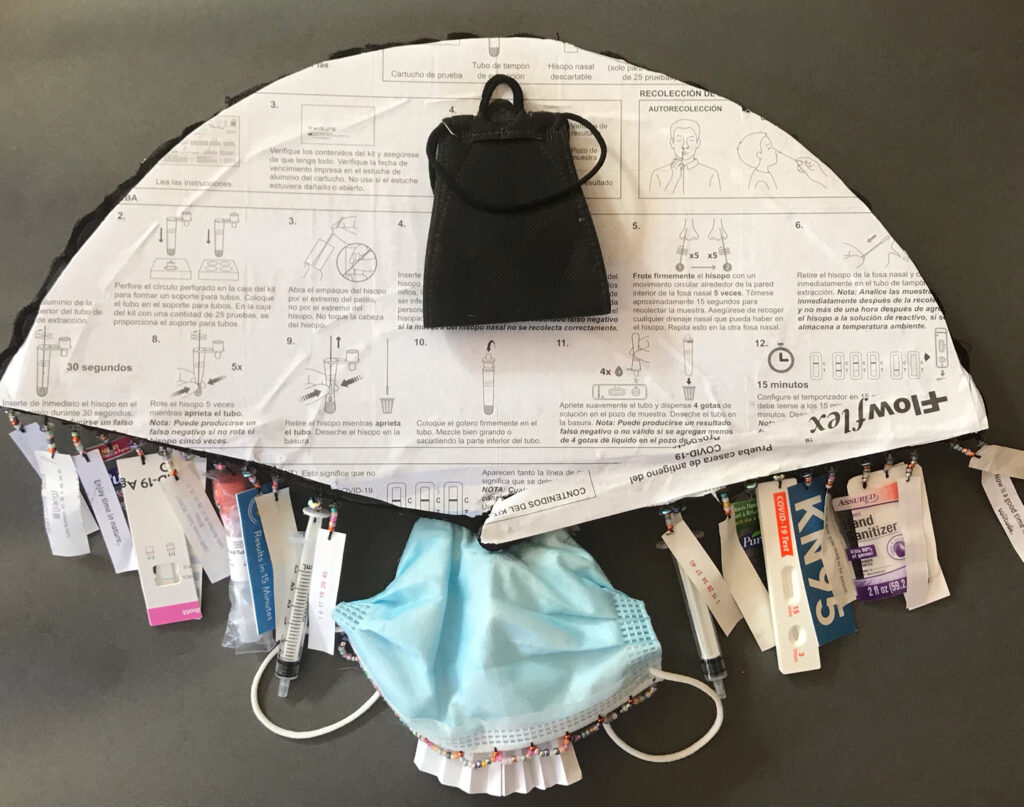
I did collect the physical bits together on a tray that I saw every time I was in the studio. There was a sense of her presence with it, so she existed even then, although not in complete form yet. This method of working is part of the way I think/process what is going on in my head when I can’t put words or concrete ideas to it. If I see it visually and let go of self, the bits seem to have a way of working themselves into order and letting me know what else they need.
Of course there was so much, and Our Lady didn’t come together in the time period I thought she would. And she existed in my mind and that felt like enough. This Winter, something shifted in my world, I felt ready to ‘re-enter’ a more normal life and move away from Covid. Time to address all that stuff on the tray!
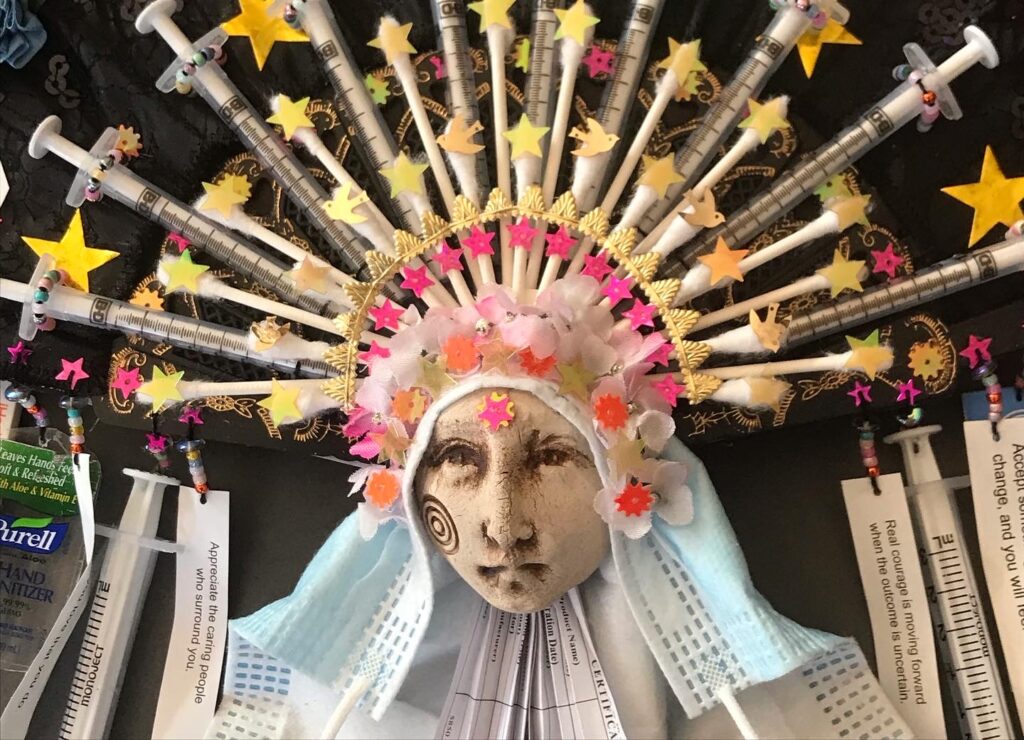
Some of the things that are part of “Our Lady’
I have always saved fortune cookie fortunes and have a big box of them. Sometimes I look at them for inspiration, or to find something fun to add to an art piece. AMAZING – many of them were eerily appropriate for Covid – “‘A chance meeting with a stranger may change your life,” ” Enjoy time in nature,” “The greatest meditation is a mind that lets go,” “Do what you can with what you have,” “Now is not a good time to travel,” “‘Now is a good time for a bit of solitude,” etc. I will always think of those fortunes when I think of that time period.
The syringes are representative of our hopes for a vaccine that would end the madness. I worked in the medical community for 25 years and was surrounded by them, but if you suddenly want them for an art project, Oh NO! not available. But when my neighbor spontaneously delivered a bag of the tiny ones to my mailbox, I was blown away. I love that they have become her halo. Indeed, vaccines are the saving magic for many illnesses.

There are a lot of references to testing and testing supplies, appropriate because the became such a part of my (our) daily lives. They are inserts from Covid tests, printed in 7 languages that the tests are approved for use in that country, stamped with a big red seal, made in China. I love red. I love they are a reminder that the entire world, the human population was in this together.
One bit of testing ephemera is actually saved from personal use, in which 5 people were home testing together and the testing method was too hard for any of us to figure out. So some of it is really personal, some more global in nature. The back is covered with a testing instruction sheet and the hanging device is a N95 mask, signaling for me when restrictions began to be lifted across the board if a N95 mask was worn. Time to let go of it all.
There is actually quite a bit of humor in the piece. I would say this is usually a part of my work, although it’s not ‘in your face’ funny. I see it as my own little joke, and an added bonus/treat for viewers that look close enough to find it. If it wasn’t for humor, how ever would we get through this life?
Meredith

NOTE: I love Meredith’s work because it represents the best in art – creative, relevant, beautiful and ironic in its beauty. Meredith, many thanks for sharing your personal thoughts and processes about Out Lady. We can all relate, and we can all be grateful on so many levels for having come together through this experience.
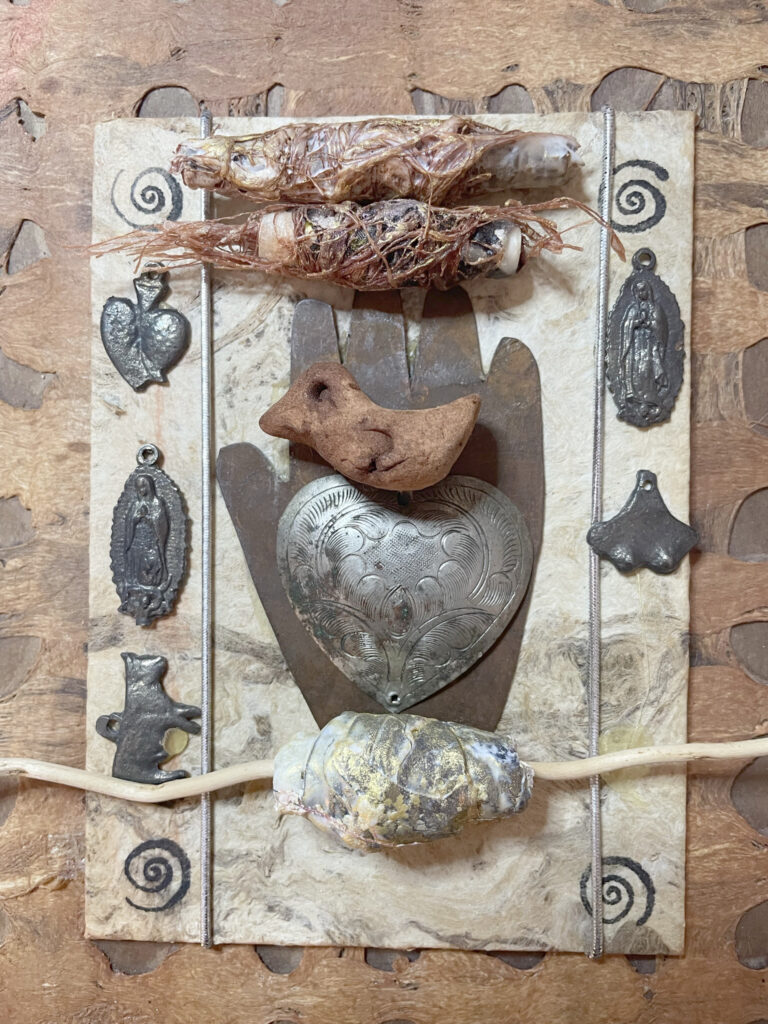
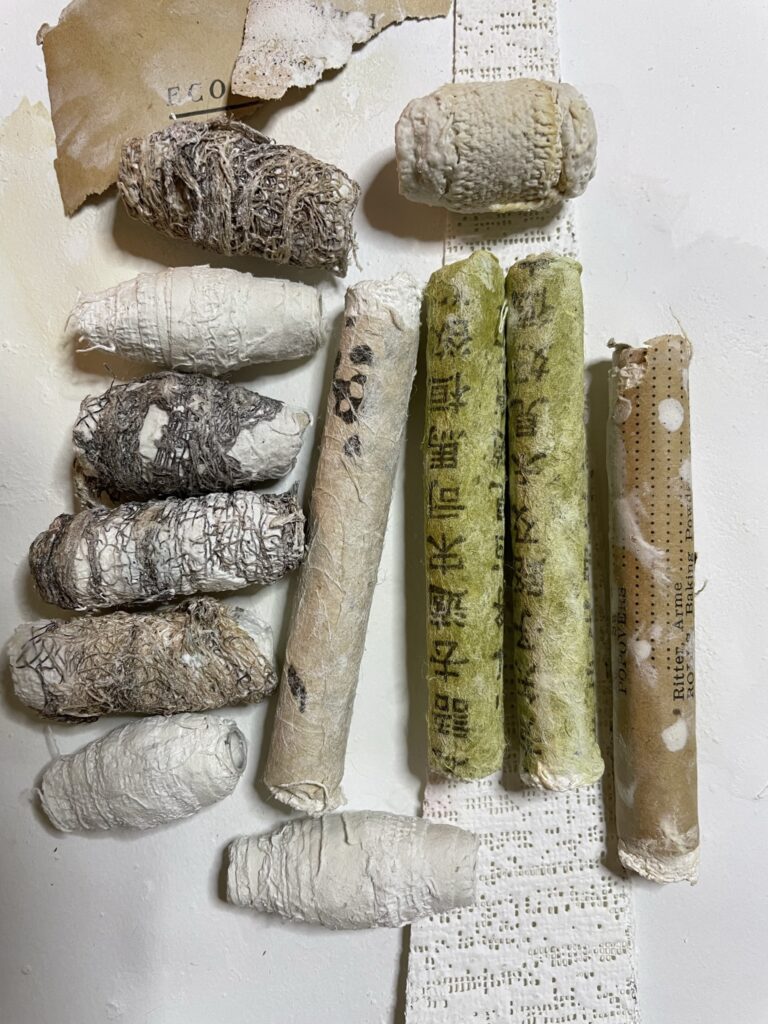


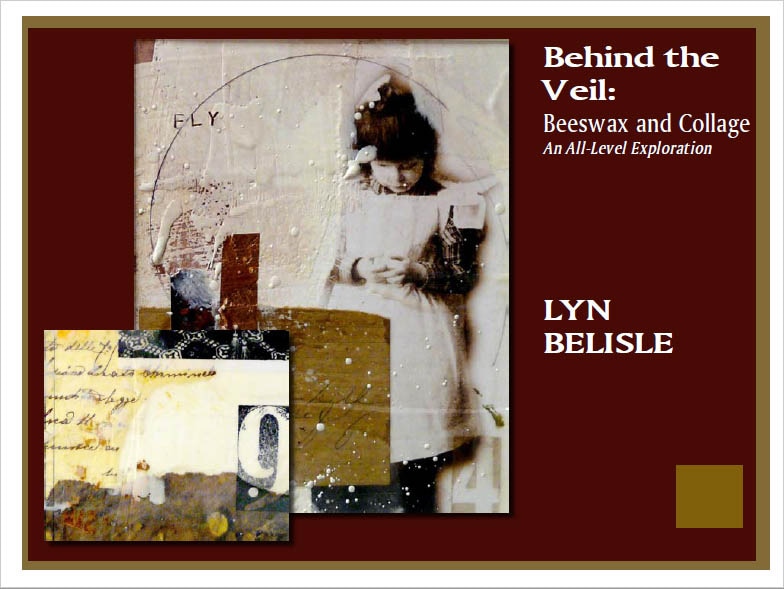

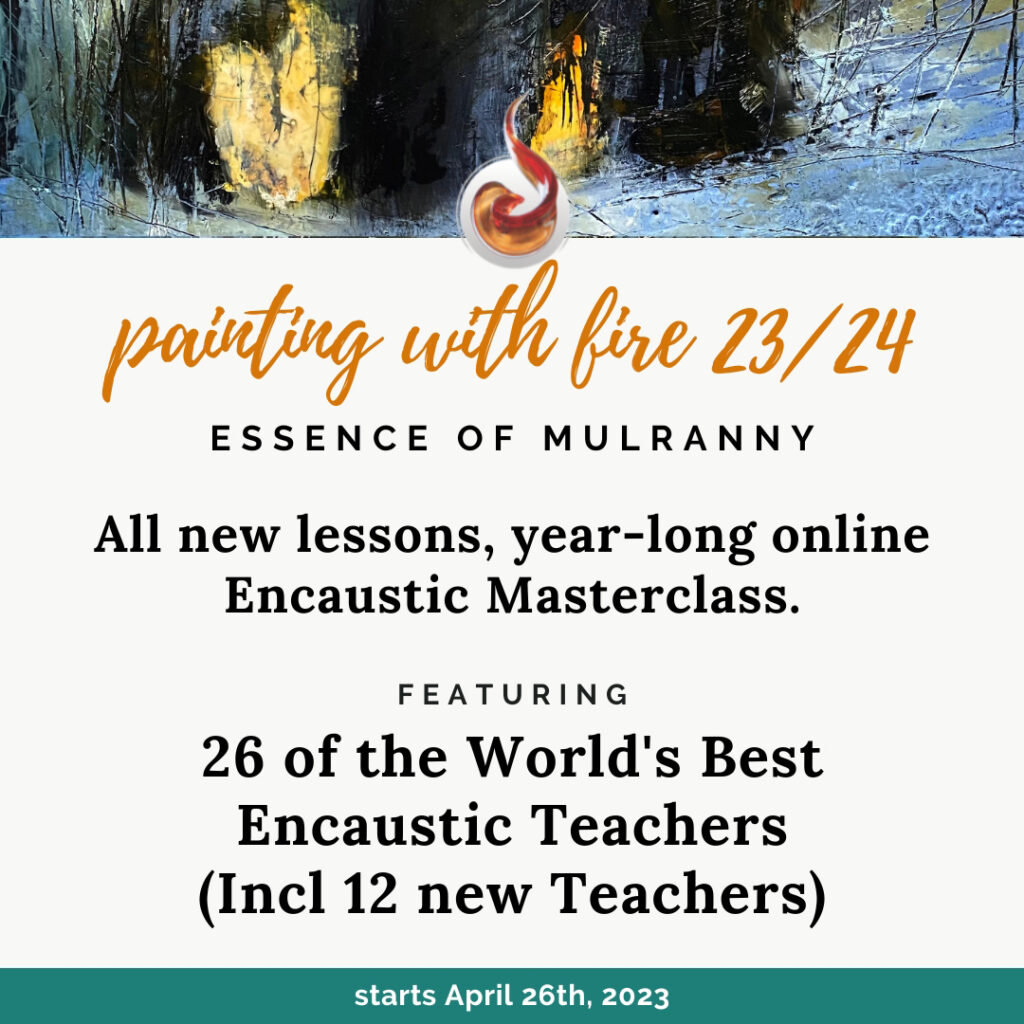
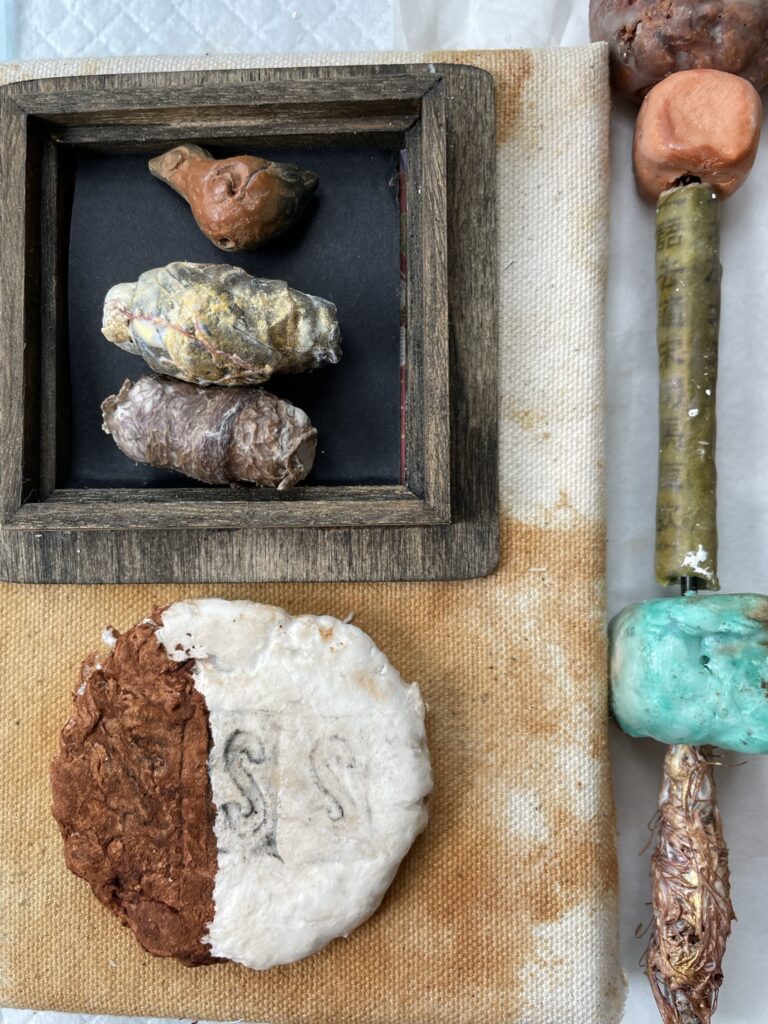







 Picking out words to stamp give me a creative kick start – it doesn’t mean that the piece will be about seven white horses or Japanese combs, but pictures start forming in my mind about how these words suggest stories, materials, and choices. I love this stamp set!
Picking out words to stamp give me a creative kick start – it doesn’t mean that the piece will be about seven white horses or Japanese combs, but pictures start forming in my mind about how these words suggest stories, materials, and choices. I love this stamp set!




